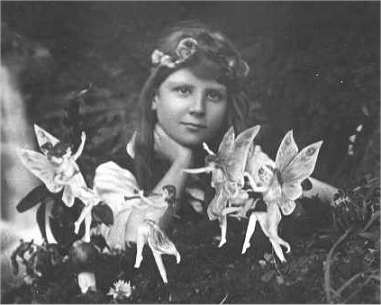EAllusion wrote: ↑Fri Jan 03, 2014 12:08 am
Is everyone here familiar with the Cottingley Fairies photos? It was a series of 5 photos taken in 1917 in England.
This is the most famous one:

It has influenced depictions of fairies even to this day.
Quaint as it might seem now, there was a great deal of controversy over them with many people, including Sir Arthur Conan Doyle, taking them as evidence of spiritual beings. There were experts in photography who declared them as legitimate.
Interestingly, I once saw a show on the Cottingley Fairies filmed in the 1970's that covered this as a controversy over the existence of spirit beings. Skeptics were brought on to offer a variety of theories for how the photographs were produced. All of them involved some relatively sophisticated photographic techniques for girls in 1917 to be using or remarkable coincidences. The show, being fundamentally interested in portraying this as a supernatural controversy, rightly cast doubt on accepting any of those theories as correct. No one explanation seemed in particular likely.
Then something marvelous happened. In the 1980's, the girls who produced the photos admitted it was a hoax. They also described how they did it. It turns out they cut out pictures of fairies from a book, stuck them to hatpins, and took pictures of them. That's it. That's what they did. So much for acid etched engravings and complicated exposures.
This story has long stuck with me for two reasons. First, whenever I see complicated and remote explanations for unusual phenomena and potential hoaxes, I'm always reminded that the reality can be devastatingly more simple. Second, while everyone was right to reject those complicated theories for how the photographs were produced, it's always fascinated me that people lost sight of the fact that even though those theories were unlikely, the explanation that entailed the photos were of actual fairies was vastly, vastly more unlikely than that. You can't prove extraordinary supernatural claims simply by attacking somewhat unlikely natural explanations.
This story does inform what I see in Book of Mormon debates. I personally am skeptical of theories of authorship that do not involve Smith. Elaborate plagiarism hypotheses have always struck me as strained. And while I find myself on the same side as believers when seeing this, I also see them as having a huge blind-spot for not appreciating just how much more implausible the supernatural tall-tale version of events is than the authorship theories they are finding without sufficient basis.
